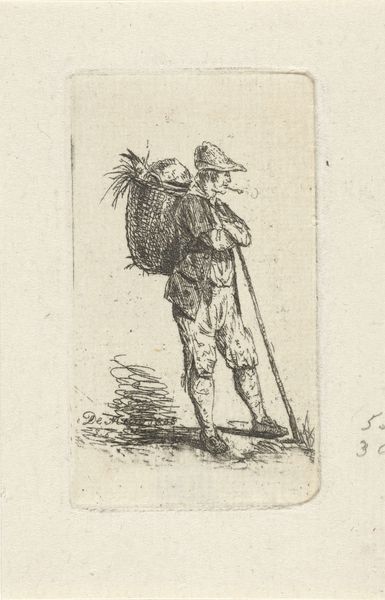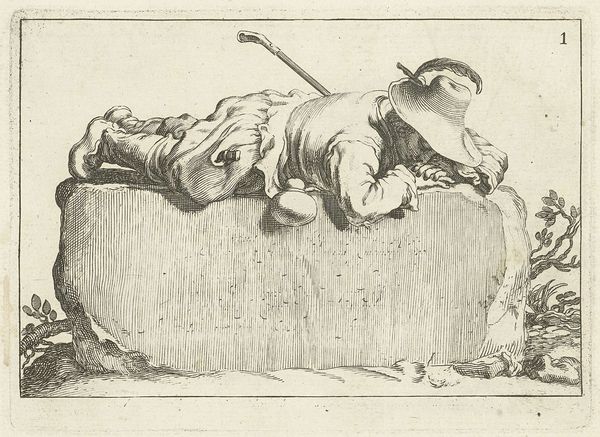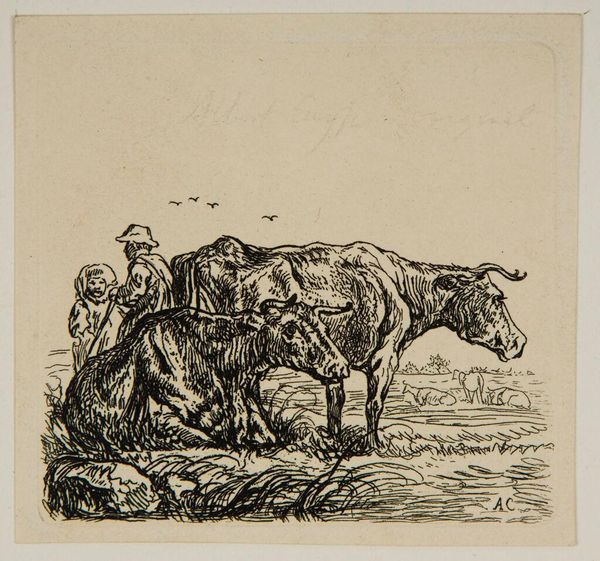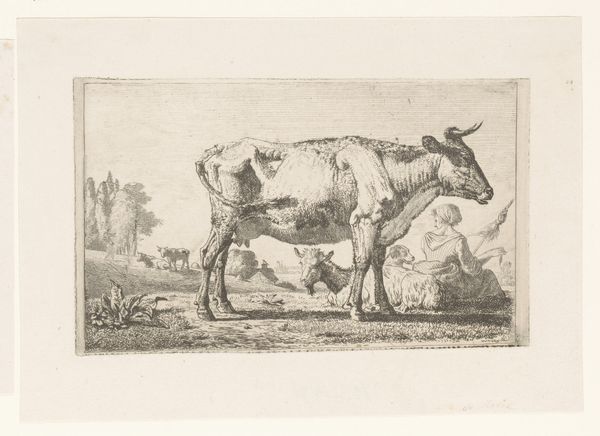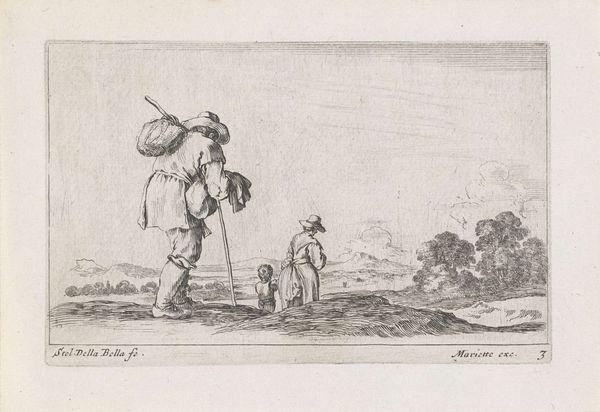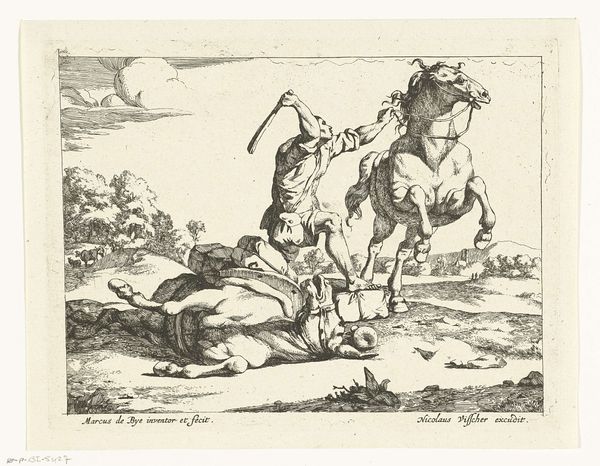
print, etching
#
dutch-golden-age
# print
#
etching
#
landscape
#
realism
Dimensions: height 133 mm, width 177 mm
Copyright: Rijks Museum: Open Domain
Curator: Welcome. We're standing before Anthonie Willem Hendrik Nolthenius de Man's "Wheel on a Pole," an etching dating from 1814 to 1824. Editor: My initial impression is one of forlorn domesticity. It evokes a sense of abandonment and perhaps the weariness of rural life, focusing on what is cast aside and weathered. Curator: Let's delve into that feeling. Observe the meticulous detail of the etching, particularly how the lines define texture and form. Notice the wheel's construction, the worn cloth, and the haphazard arrangement. Editor: And consider what is actually being represented, or rather, who is not. There's a powerful absence of human figures, but these objects become stand-ins for human activity and the mundane rhythms of life, evoking post-Napoleonic social conditions of people dislocated and forced to do more with less. Curator: The realism inherent to the Dutch Golden Age is undeniable. The print carefully captures the everyday, yet the placement of the wheel elevates it, transforming something ordinary into a study of geometric forms against the naturalistic landscape. Look how the verticality of the pole plays against the horizontal sweep of the fields. Editor: That realism has the political context often stripped away. I can’t help but think about who owned the discarded items, and how systems of labor at the time meant such hard-worn objects are essentially their calling cards. Curator: A fascinating perspective! And, if we pull back, we can see that Nolthenius de Man masterfully manipulated light and shadow in this print, creating a depth that invites prolonged contemplation. Editor: Perhaps we're looking at both resilience and quiet desperation. The wheel stands as a makeshift monument to an existence dependent on turning, grinding, and perpetual work under duress. I see it as commentary on society that should never be disentangled from any appreciation of artistry. Curator: Well, I think this speaks to how a single artwork can provide diverging but equally compelling interpretations. Editor: Absolutely! Nolthenius de Man challenges us to perceive meaning in unexpected places.
Comments
No comments
Be the first to comment and join the conversation on the ultimate creative platform.
